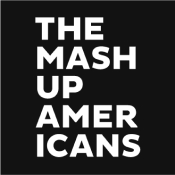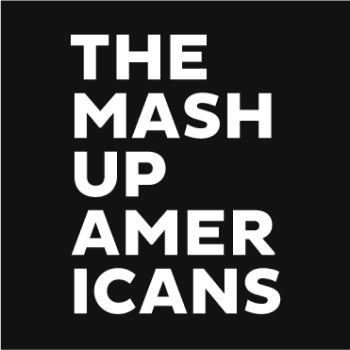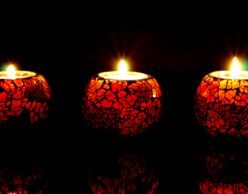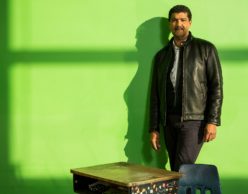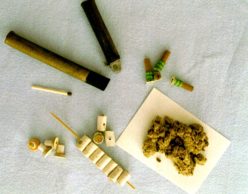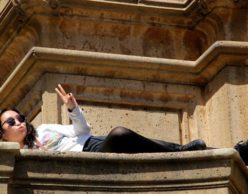Alice Wong On Disabled Ancestors And Accessible Futures
![[Image Description: Photo of an Asian American woman at a desk. She is looking at her laptop computer and there is a microphone in front of her. She has headphones over her ears and is wearing a mask over her nose attached to a gray tube.] Photo Courtesy of Alice Wong](https://www.mashupamericans.com/wp-content/uploads/2021/02/Standard-New-Site-Feature-Image-Size-1140-x-400-1.jpg)
We are welcoming in the Year of the Ox with reflections on accessibility and just futures! Chinese-American Mash-Up Alice Wong (she/her) is a disabled activist, media maker, and consultant. She is the Founder and Director of the Disability Visibility Project, an online community dedicated to creating, sharing and amplifying disability media and culture created in 2014, hosts the eponymous podcast and recently published Disability Visibility: First-Person Stories from the Twenty-First Century. Alice joined The Mash-Up Americans to talk about creating cultural home, honoring peers who have become ancestors, and what it means to go beyond empathy.
Alice, how do you mash up?
I’m a bunch of things, and they’re not mutually exclusive. That’s what’s really wonderful, that we have people who are part of multiple communities. I’m the daughter of Chinese immigrants, I’m a sister, I’m a friend, I’m an Asian American disabled woman, I’m an activist, I’m a storyteller, I’m a night owl. I’m a nerd. And I’m a lover of storytelling and pop culture. Those would be some of the things that I am.
Happy New Year! As in, Goodbye 2020, Hello 2021, and Hello Year of the Ox! What’s on your mind as we enter a new year?
I still am so mystified by why people don’t see how we impact each other so much. We don’t live in silos. This year, in addition to my book, I’ve published several op-eds about the coronavirus pandemic in an effort to push back at the fact that a lot of coverage is not centered on us, yet most of us are the ones dying. But it’s not to elicit empathy. Empathy is very superficial. It’s not to raise awareness. So what, you’re aware now — how is that going to change anything? For me, it’s about how do we get people to realize that we’re all interconnected. And I think that’s the challenge ahead. What’s it going to take to get people to care about one another?
What are some of the things that have been sustaining you through this pandemic?
Even before the pandemic, most of my social life and my activism life has been online, so while I do feel isolated physically, it’s my ongoing group chats with my friends, and all my DMs with individuals, that really keep me going, for sure. People that you can just hit up any time, that’s been very sustaining. I think taking pleasure in the little things in life, whether it’s Netflix, or a slice of pie, that’s definitely sustaining me. Even though this last year has been very difficult and bleak for a lot of us, I do have a lot of things to be thankful for.
![[Image Description: Photo of an Asian American woman in a power chair. She is wearing a blue shirt with a geometric pattern with orange, black, white, and yellow lines and cubes. She is wearing a mask over her nose attached to a gray tube and bright red lip color. She is smiling at the camera.] Photo Credit: Eddie Hernandez Photography](http://www.mashupamericans.com/wp-content/uploads/2021/02/AliceWong_021221_EDITED_2.jpg)
For a lot of people, the pandemic has increased the amount of time spent at home, and home can mean so many different things. Where do you feel most at home?
I think I feel at home when I don’t need to explain myself. I just show up as I am, and that doesn’t need to be debated, or talked about, or explained. Or with my access needs, for example. I feel comfortable to be vulnerable, I feel comfortable to be complicated, I feel comfortable to bring in all of my identities. I think that’s what home is, right? You feel your full self, able to speak the way you want, move the way you want, you can feel the way you want. I think that’s what home is.
I feel comfortable to be vulnerable, I feel comfortable to be complicated, I feel comfortable to bring in all of my identities. I think that’s what home is, right?
You’re around other people that want that for you. I think that’s also what the spirit of Disability Visibility is. In a lot of ways, this book is like a cultural home, a little portable home that you can carry around, that in it people can find a little bit of belonging.
What was most important to you in the publication of Disability Visibility?
It’s still a rarity to have a book by disabled people that’s edited by a disabled person. So for me, that was a particular responsibility and privilege that I had, because I want more of this to happen. I want to see more disabled editors and all kinds of people within the publishing industry, so I wanted to make sure I used this opportunity in the best way I could. I wanted a snapshot of the contemporary disabled experience. That was the first priority – to provide a sense of some of the major issues and experiences that are happening.
For example, there’s a piece in the book by Karolyn Gehrig about the #MeToo movement, and how that’s left out disabled people. We have a piece by the Harriet Tubman Collective, which is a group of Black disabled people talking about police violence, and how the Movement for Black Lives, in the discussions about incarceration and police brutality and racism, has for a long time left out the disabled experience, the Black disabled experience. So those are just two examples of pieces about capturing the zeitgeist, from the disabled perspective.
There are so many powerful legacies of work throughout the book. How did you approach weaving them together?
This was really my wish list. I was intentional about the very first piece — it’s by the late Harriet McBryde Johnson, and she wrote an essay in 2003 that was published in the New York Times. It’s a punch in the gut. It touches on the very real, existential threats and the ableism that’s wrapped up in Harriet’s everyday life — what it takes to travel as a disabled woman, to get a hotel, or to navigate on campus, all the way up to the heart of her essay, about her engagement with a really famous philosopher who basically espouses the idea that people born with disabilities should not exist. This is a very eugenic idea, that is still with us today. We can see that very explicitly in what’s happening throughout the pandemic. Right now in the United States, 40% of deaths nationally are taking place at long-term care facilities, where a lot of these people are older or disabled people. There is this attitude I’ve seen throughout this pandemic, that, “Oh, these people had pre-existing conditions,” or that, “Oh, these people already lived a long life,” or that it was inevitable, as if we’re disposable. And I think this is what really hurts me, personally. But it also makes me feel angry, because these are larger, systemic problems, and Harriet’s essay does such a brilliant job of making this a very personal story.
One of the goals of this book is to really raise the bar, and not let people off.
One of the goals of this book is to really raise the bar, and not let people off. This is a chance for people to reflect, to think about all of our own assumptions. And to also think about, what more can I do? At the very end of this book, there’s an essay by s.e. smith. s.e. writes about the beauty and brilliance that happens when disabled people come together. Yes, there are challenges, yes, there’s pain, there’s trauma, but there’s also such joy. And whether they read it from beginning to end, or any other order, I really do hope readers think about what’s next. And that’s why I created a reading and resource list in the back. I really hope the book can be a stepping stone that encourages people to seek out more work by disabled people, and learn more. I hope it is a gift, I hope it fills a need, or gives people sustenance, in a time where I think we all need sustenance.
You’ve talked about the importance of plain language as part of access.
I did commission an autistic person who is a journalist to create a plain language version that’s free on my website. That to me was another chance to make the book as accessible as possible. I learned this from people who are intellectually and developmentally disabled. We think about access, we think about Braille, or ASL, we think about curb cuts or elevators, but we also need to think about cognitive access too. All types of learners, people with learning disabilities, people with brain injuries, people who speak English is a second or third language… Plain language is really part of access.
Who are some of the people who’ve inspired you?
A lot of disabled women and femmes opened doors for me or showed me what’s possible. There is somebody who is no longer with us, her name is Barbara Faye Waxman. And she’s a disabled woman who’s also a researcher, and she’s done work on reproductive health for women with disabilities. I did not know that people like Barbara existed. We didn’t really know each other that well, but just the fact that she existed, and that I did get to talk to her a bit. She also was excited to know that I existed as well, the fact that there was another generation after her. That was really exciting to me, to be part of that history. She left a legacy of work that I look up to.
One of the contributors to the anthology, Stacey Milbern — even though she’s younger than I am — died this past May. She really was a visionary, the way she built community, and taught me a lot about how to live your values every day. I think about her all the time. She was a close friend. And she was so excited about this book, she was such a big supporter. And I just know that she’s happy to see this book out in the world. It’s pretty prescient, that she wrote a guest essay on my website in 2013 about disabled ancestors. Here we are today, in 2020, and she is one of my ancestors. It’s hard to still even think about that, but I really think of her as a gift that will speak across time, for the past, present and future. And that is something that makes me think about treating every day as a gift, and not taking for granted all the friendships and relationships that I have. I’m just so thankful that Stacey was part of my life.
Speaking of ancestors, we always like to ask: What is your bubbemeise?
You know, this is bubbemeise. Put on a sweater. Also, slowww dowwwn. What’s the rush? What is time? These are really simple things that are also overarching. Things that are important to you, focus on that, and everything else, you’ll get to it later. Slow down your life, think about what you really want to do, and let that be your guide. You only do that by slowing down, I think.
Yeah, we can feel more when we slow down.
I think we don’t give ourselves permission to slow down, or to feel, so that it’s almost like a defense from feeling. Because we actually want to avoid the feelings, or avoid thinking about the harder things. So that’s a lot of the internal work that we all have to do. Which takes time, like everybody’s on their own path. There’s no A-to-Z, or one way to go about this. Everybody’s at their own pace, and that’s okay, too.
What are some of the visions you’re holding for this book’s future, and for the year to come?
When we do get through this pandemic, I hope that a lot of organizations, cultural institutions, and universities, for example, don’t want to return back to normal. I hope they carry forward everything they’ve adapted to, in terms of remote learning, remote work, having events online… everything they learned about, in terms of creating more access and reaching people at this time. There’s such a reflex to restart the economy, to do as we have before. But I think if there’s anything we’ve learned from a lot of marginalized communities during this pandemic, is that what we had before was not that great. And this is the time to actually make some changes, and move forward. Systemic racism, medical racism, there’s so many things that have finally been exposed for what they are, even though lots of people knew about it.
Our world is never going to be the same again. And I think the more we can grapple with that, the more chances we have to think about, what kind of world do we want in the future? What kind of world do we deserve? And also, how do we just start building that world right now? How do we change the way we see ourselves in the world, and our capacity to contribute?
There’s no excuse to look away anymore. I really want that feeling to remain, and I really want people to continue in our own process of learning and unlearning. Like myself, I have a lot of things I need to work on, and we can’t get complacent again. Frankly, this won’t be the last pandemic. There’s going to be others, and climate change is a reality.
Our world is never going to be the same again. And I think the more we can grapple with that, the more chances we have to think about, what kind of world do we want in the future? What kind of world do we deserve? And also, how do we just start building that world right now? How do we change the way we see ourselves in the world, and our capacity to contribute? It doesn’t have to be this huge big thing, it could be just everyday little things. And I think that’s just as valid, just as significant as anything else. You don’t have to run for office to create political change. You don’t have to come out with a book. There’s a lot of ways to change.
For More, Check Out:
Disability Visibility Project website: https://disabilityvisibilityproject.com/
Alice’s Twitter: https://twitter.com/DisVisibility
